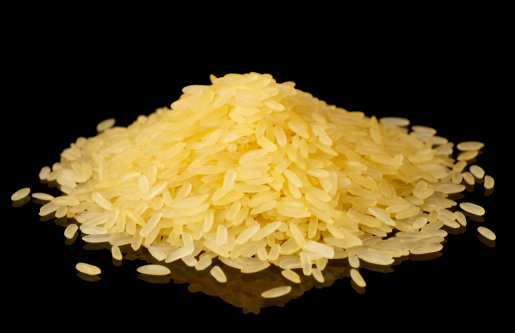BLOGS
Economic Effect Of Hybrid Rice
Rice is one of the most essential goods around the world. Aside from it being a part of the daily food in Asian countries, it is also a product that boosts the economy through trading and exportation. The Philippines is one of the first countries that exports rice.
As the population grows along the globe, the demand for rice production is also increasing. This brings a stupendous pressure to the country to produce the demand and be sufficient to sustain the growing population. The government has been conducting researches and plans on how to solve the crisis- one of these is the development of hybrid rice technology.
If you are interested to know more about this genius technology, just keep reading this article.
What is Hybrid Rice Technology?

Hybrid Rice Technology is utilized to enhance rice production, as has been shown in countries like China and more recently in Vietnam and India, with the concomitant positive effects of providing rural jobs, land savings, and women’s empowerment. Researchers have anticipated that the Philippines’ high labor-to-land ratio and high percentage of irrigated rice acreage will lead to an increase in demand for hybrid rice technology. In order to increase national rice production, Philippine farmers’ productivity, and their competitiveness in the short term, as well as to eventually achieve national rice self-sufficiency and food security in the long term, the Philippine government launched a national hybrid rice program in January 1998.
When pollen from anthers of a rice plant belonging to a different variety or line fertilizes an egg, hybrid rice is the result. To produce two different parental lines, a seed parent, typically a male sterile, and a pollen parent are necessary in order to create large numbers of hybrid seeds.
How does hybrid rice breeding works?

The production and development of hybrid seeds could be explained like this- for example, say a breeder is looking for plants that produce greater fruit. In that situation, he can choose a mother and a father plant that produce fruit that is larger than those of other plants. Breeding is not only about modifying the size of products but also the ability to have higher yield per plant (like the goal of hybrid rice technology), resistance to certain diseases, or ability to store or ship well.
What are the benefits of hybrid rice?

The result of a cross between two genetically different rice parents is a hybrid. The correct hybrid parents can produce offspring that are more vigorous and productive than either parent alone. The benefit is that they are easy to grow and more vigorous.
Hybrid seeds are commonly known to be convenient and non-complex to develop than heritage seeds for a number of reasons. For one thing, disease resistance has been developed into several hybrid plant species.
This just means that plants cultivated from hybrid seeds have a lower risk of contracting or developing bacterial, viral, or fungal diseases, which can slow down the growth, lower yields, or even cause plant death.
What is the importance of hybrid rice in the Philippines?

The government’s efforts to increase the nation’s food security levels this year have been greatly aided by its efforts to produce hybrid rice.
According to Frisco Malabanan, senior technical consultant at SL Agritech Solutions, the country’s rice crop has improved since interventions to raise the level of rice adequacy. According to data from the Philippine Statistics Authority, the amount of hybrid rice produced overall during the 2021 dry cropping season was 3.67 million MT (MMT), or 37% of the total amount of ‘palay’ produced during the previous dry season.
Another essence of this technology is that although the farmers in the Philippines are under pressure from the nation’s increasing consumption demands and have to become dependent on growing hybrid rice varieties because they produce more under identical conditions than conventional types, higher economic rewards are demonstrated by the 15-20% yield advantage of hybrid rice seeds. The potential for hybrid rice to increase output is real. Increased vigor and enhanced tolerance to diseases and insects are two further noteworthy benefits of the hybrid rice seed.
Suggested Read: How Does Foreign Exchange Impact The Real Estate Market
Philippines Hybrid Rice Seed Market Analysis
In Philippine hybrid seed production, a seed output of at least 1 tonne/ha is regarded as the profitability barrier. In 1993, PhilRice started to manage small-scale ( 1 ha) on-farm seed production activities in the northern Philippines using the hybrid seed production technique developed at IRRI between 1986 and 1992. Throughout four seasons, authorized seed growers produced 1.9 tonnes/ha of high yield on average.

The Duterte administration aims to produce 20.47 MMT of palay from 4.74 million hectares in 2021, and as part of major interventions, including the Rice Competitiveness Enhancement Fund (RCEF), expanded RCEF, Rice Resiliency Project (RRP), and regular national rice program, farmers will be given free seeds of inbred and hybrid rice varieties (NRP).
The PSA predicted that the nation would produce 19.44 MMT of palay in 2020, made up of the actual harvest of 11.9 MMT from January to September 2020 and the anticipated output of 7.54 MMT in the fourth quarter, based on the standing crop on November 1, 2020. The harvest of palay in 2020 increased by 3.3% from the 18.81 MMT produced in 2019 and beat the previous record of 19.27 MMT set in 2017.
What is the growth rate of Philippines Hybrid Rice Seed Market?
Based on the forecast period, a CAGR of 5.2% is expected to be recorded in the Philippines Hybrid Rice Seed Market.
This growth rate was forecasted through the development of hybrid rice breeding in 2022.
February 2022: In order to make use of and advance biotechnology in the Philippines, the Department of Agriculture reports that the country’s mass production of Golden Rice seeds has begun this year, particularly in the vitamin A-deficient areas. This initiative is run by the Philippine Rice Research Institute.
In July 2022, the Philippine Department of Agriculture created an information system to speed up procedures and transactions involving rice seeds. The Philippine Rice Research Institute (PhilRice) and the Bureau of Plant Industry (BPI) developed this system, which, among other modules and apps, includes production and planning, field data collection, documentation, and geotagging; monitoring, inventorying, and distribution of seed reserves; source tracing for hybrid seed; application and approval of accreditation and seed certifications; and report generation. In the same month, the Philippine Rice Research Institute (PhilRice) worked with the Department of Agriculture’s Regional Field Office to provide farmers in Urdaneta City and Manaoag, Pangasinan, with Golden Rice (GR) seeds.
Who are the key players in Philippines Hybrid Rice Seed Market?
- Bayer Crop Science Inc.
- Pioneer Hi-Bred Philippines
- SL Agritech Corporation
- Syngenta
- Yuan Longping High-Tech Agriculture Co., Ltd.
Several seed companies control a large portion of the consolidated Philippine hybrid rice seed market. Pioneer Hi-Bred Philippines Inc., Bayer AG. The key firms identified during the study period were SL Agritech Corporation, Syngenta Philippines Inc., and Yuan Longping High-Tech Agricultural Co., Ltd. In the upcoming years, it is projected that the market under study will grow more consolidated, with significant players actively engaging in different initiatives. The major seed companies make significant R&D investments in order to introduce novel goods that meet the needs of farmers.
What’s your take on Hybrid Rice?
Now that you know what hybrid seeds are, you should also know when you might wish to use them. Just keep in mind that no seed, whether it is hybrid, heritage, organic, or GMO.
We sincerely hope you found this post useful; if so, would you kindly spread the word to someone else who might benefit from it?

















